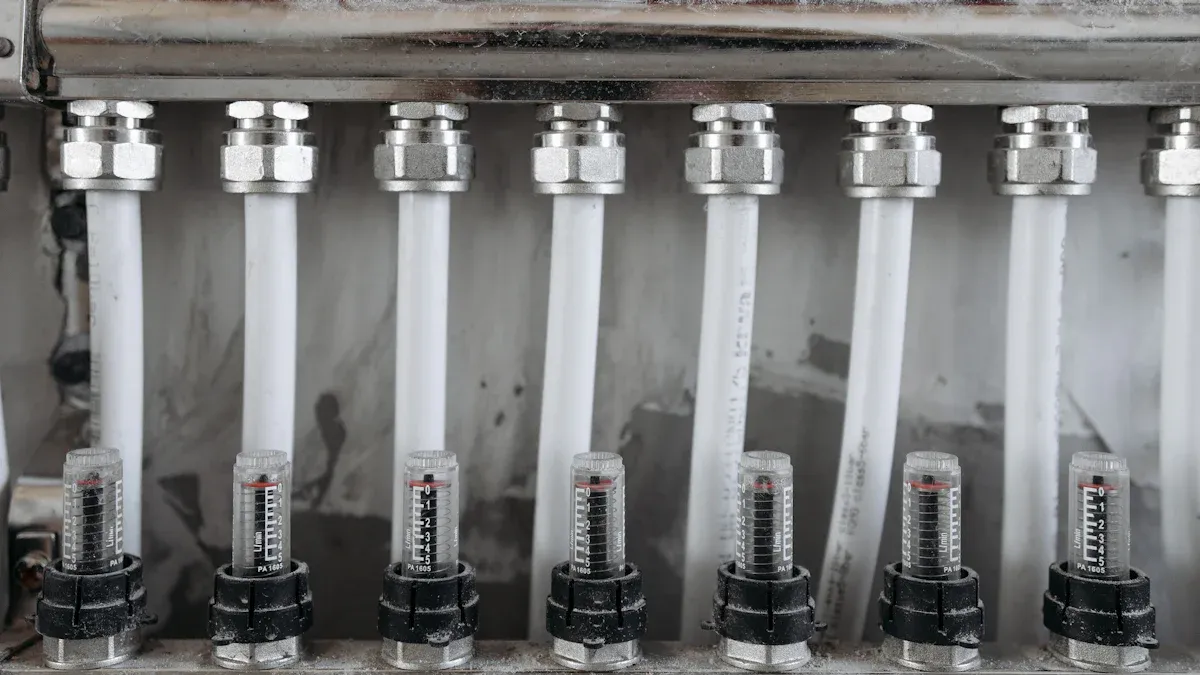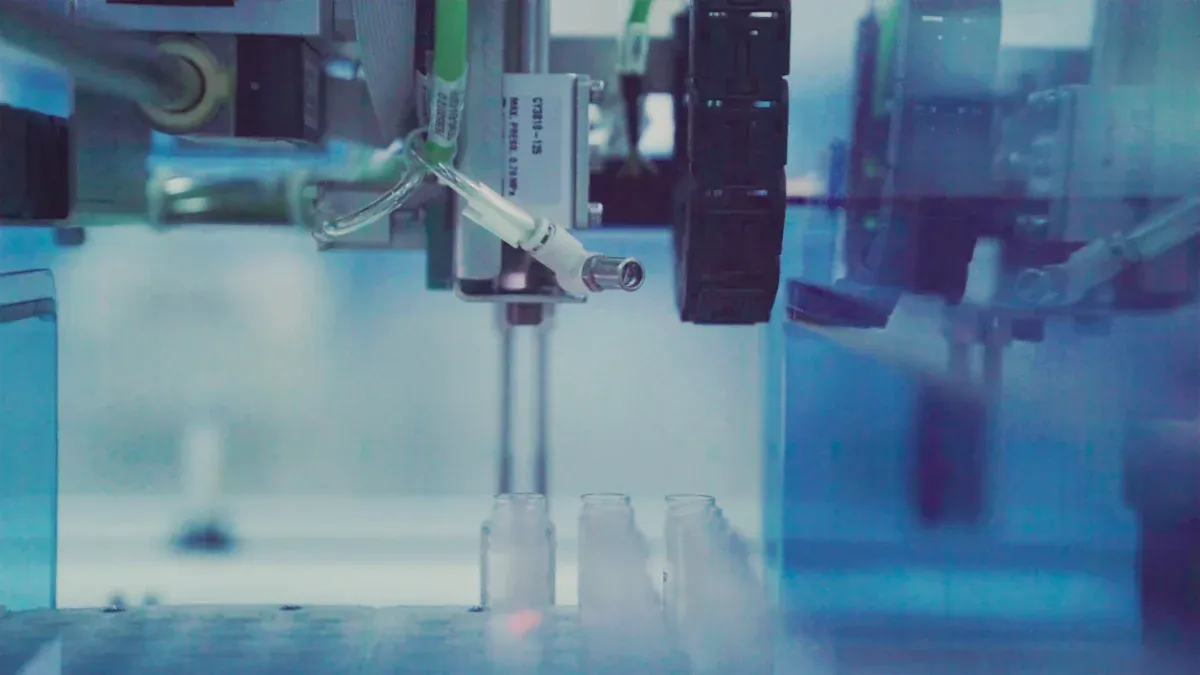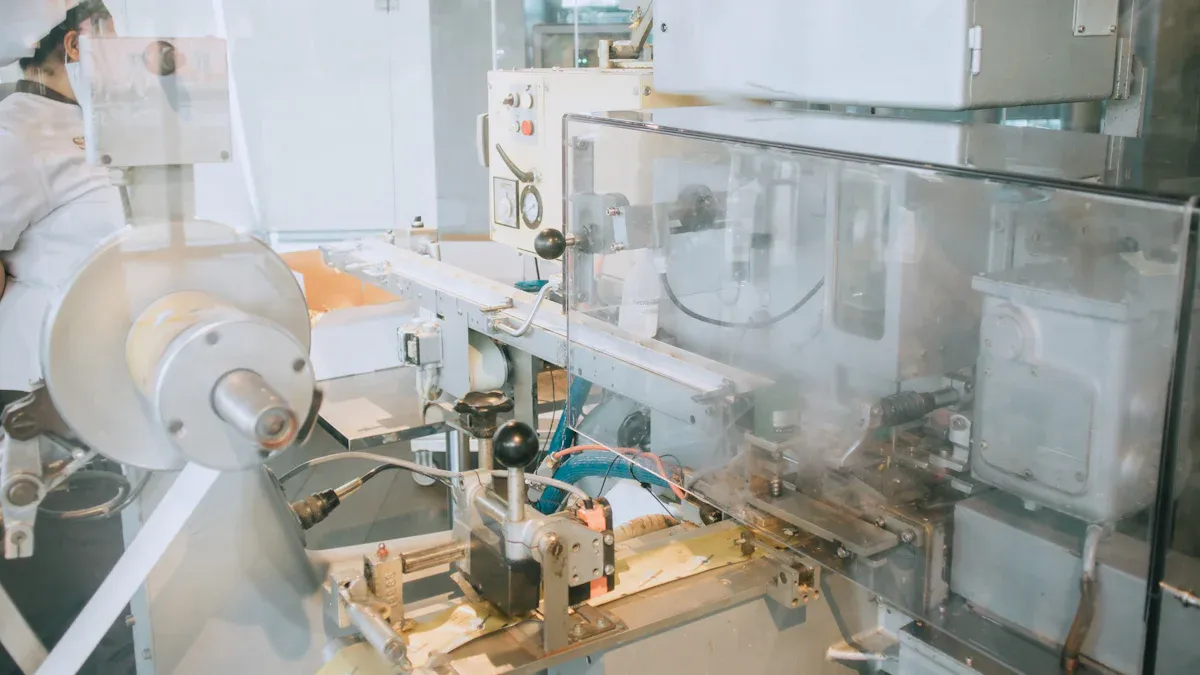
Reducing defects in injection molding is critical for producing high-quality parts. Defects not only weaken the strength and durability of plastic components but also increase costs and waste. Cosmetic flaws, for instance, often lead to delays and cost overruns due to lengthy investigations. Adopting strategies to minimize common defects ensures better product quality and reduces waste management costs, which can account for 2-5% of total production expenses. By optimizing processes, you can cut defective parts by up to 25% and lower disposal costs by 30-50%. Proactive measures help you achieve efficient, cost-effective production.

Sharp corners and thin walls often lead to defects in plastic injection molding. Sharp corners create stress concentrations, which can weaken the structure of plastic parts and increase the likelihood of cracks or failures. To address this, you should round the corners by adding radii. This adjustment distributes stress more evenly and improves the flow of material during molding. Thin walls, especially those under 0.08 inches, can cause short shots due to air trapping. Maintaining consistent wall thickness reduces warping and ensures better moldability. Adhering to these design principles minimizes defects and enhances the durability of your plastic parts.
Draft angles play a crucial role in the efficient ejection of parts from the mold. Without proper draft, parts may stick to the mold walls, leading to production delays and surface damage. By incorporating draft angles, you reduce friction during ejection, preserving the surface quality of the molded parts. This also prevents wear and tear on the mold and extends its lifespan. Efficient ejection enabled by draft angles contributes to shorter cycle times, improving overall production efficiency. When designing parts, always consider the appropriate draft angles to avoid undercuts and ensure smooth production.
Mold flow analysis tools allow you to predict potential defects before production begins. These tools simulate the flow of material within the mold, helping you identify issues like air traps, warping, or uneven cooling. For example, adjusting parameters such as cooling time, melt temperature, and mold temperature can significantly reduce defects. A study shows that optimizing these parameters minimizes warpage, sink marks, and shrinkage. By using mold flow analysis, you can refine your design and process, ensuring high-quality plastic parts with fewer defects.
Choosing the right material ensures your injection molding process produces high-quality plastic parts. Matching material properties to application requirements prevents defects and improves performance. For example, mechanical properties like tensile strength and elasticity determine how well a material withstands force. Thermal properties, including melting point and glass transition temperature, guide you in selecting materials that perform well under heat. Electrical properties, such as dielectric strength, are essential for parts requiring insulation. Chemical resistance ensures durability in environments exposed to solvents.
Tip: Use ASTM standards like D638 for tensile strength and D3418 for melting point to verify material reliability.
Material flow characteristics directly impact the quality of molded parts. Melt flow rate (MFR) indicates how easily a material flows when molten. High MFR materials are ideal for intricate designs, as they fill molds more effectively. Low MFR materials, while harder to mold, often produce stronger and more durable parts. For applications requiring high strain rates, materials like ABS and polycarbonate offer increased ductility and impact resistance. Conversely, low strain rates may lead to creep, affecting long-term load-bearing capacity.
Note: Conduct small-scale trial runs to confirm material performance under intended processing conditions.
Testing material compatibility with mold design prevents production issues and ensures successful integration. Adhesion testing, environmental stress testing, and prototype shots validate material and mold compatibility. For example, peel testing measures bond strength, while environmental cycling verifies durability under temperature and humidity fluctuations. Incorporating mechanical interlocks or using specialized primers enhances bonding between incompatible materials. Additives and compatibilizers bridge gaps between materials, improving interaction.
Tip: Conduct chemical resistance testing for applications exposed to harsh environments to avoid unexpected failures.
| Material Properties | Best Practices for Handling Materials |
|---|---|
| Viscosity | Verify material certification and supplier quality standards. |
| Thermal Stability | Inspect raw materials for signs of contamination, discoloration, or damage. |
| Moisture Absorption | Test moisture content before processing and ensure it meets the manufacturer’s specifications. |

Regular inspection and cleaning of molds are essential for maintaining high-quality injection molding processes. Dirt, dust, and contaminants can accumulate on mold surfaces, leading to defects like flow lines or uneven finishes. After every production run, perform basic cleaning to remove visible debris. Use tools like compressed air, brushes, or solvents to clean mold surfaces effectively. Monthly inspections should focus on all mold components, identifying wear or damage that could affect performance. Annually, schedule a detailed maintenance session to replace worn-out parts and lubricate moving components.
Tip: Implement a preventive maintenance schedule to identify potential issues early. This proactive approach minimizes unexpected breakdowns and ensures optimal mold performance.
| Frequency | Activity Description |
|---|---|
| After Every Production Run | Perform basic cleaning and inspection for visible damage. |
| Monthly | Conduct a thorough inspection of all mold components. |
| Annually | Schedule a detailed examination and maintenance session. |
Proper venting is critical in injection molding to prevent air traps that cause defects like burn marks or incomplete fills. Vents allow trapped air to escape during the injection process, ensuring smooth material flow. Place vents strategically near thick sections of the mold where air is more likely to get trapped. Insufficient venting can lead to vacuum voids, which compromise the quality of the final plastic part.
Note: Burn marks often result from inadequate venting. Regularly inspect vent locations and ensure they remain clear of obstructions to maintain effective airflow.
Over time, molds experience wear and tear that can lead to dimensional inconsistencies in injection molded parts. Regularly inspect molds for signs of damage, such as scratches, dents, or corrosion. Addressing these issues promptly prevents defects like flow lines or warping. Use non-destructive testing methods, such as thermography or acoustic emission testing, to detect hidden damage.
Tip: Follow industry standards like ISO 9001 and ISO 13485 to maintain high mold quality. These standards emphasize continuous improvement and evidence-based decision-making, ensuring consistent results in injection molding processes.
Controlling injection speed and pressure is essential for reducing defects in plastic parts. High injection speeds can cause issues like flow lines or burn marks, while low speeds may lead to incomplete fills. You should adjust the speed to ensure the material flows smoothly into the mold cavity without creating turbulence. Similarly, maintaining the right injection pressure helps fill the mold completely and prevents voids or sink marks. Monitoring these parameters during the process ensures consistent quality and minimizes the risk of warping defects.
Mold and melt temperatures play a critical role in the injection molding process. Overheating the melt can degrade the material, leading to weak or brittle parts. On the other hand, a mold that is too cold may cause the material to solidify prematurely, resulting in incomplete fills. You should set the melt temperature according to the material's specifications and ensure the mold temperature promotes uniform cooling. Regularly checking and fine-tuning these temperatures helps maintain the integrity of the plastic parts and reduces the likelihood of defects.
Cooling time directly impacts the quality of injection molded parts. If the cooling process is too short, it can lead to warping or shrinkage due to uneven temperature distribution. To minimize these issues, you should optimize the cooling effects by designing efficient cooling channels or plates. Uniform cooling throughout the mold cavity prevents hot spots that cause uneven shrinkage. Additionally, ensuring the mold temperature is consistent helps regulate the cooling process and reduces the risk of warping defects.
By carefully monitoring and adjusting cooling time, you can achieve high-quality plastic parts with fewer defects.
Regular inspections during production help you identify and address defects early. By verifying part features and ensuring critical dimensions meet design specifications, you can catch non-conformances before they escalate. For example, conducting inspections at the start of production and during the process allows you to make adjustments before high-volume manufacturing begins. This reduces downstream issues and prevents costly rework or delays.
Periodic first article re-validation also helps maintain consistent quality over time. Measurement trends can reveal dimensional drift or process deterioration, enabling you to take corrective action promptly. A study highlights that stringent inspections of injection molded parts significantly reduce production risks and costs. This approach ensures compliance with industry standards and improves overall product quality.
| Benefit | Description |
|---|---|
| Verifies part features | Ensures all features meet design specifications. |
| Catches non-conformances | Identifies issues early, affecting fewer parts. |
| Allows process adjustments | Facilitates changes before high-volume production. |
| Reduces downstream issues | Minimizes manufacturing problems and escapes. |
Automated defect detection systems enhance your ability to identify defects in injection molding processes. These systems use advanced machine vision technology to detect anomalies in real-time. By training on images of defect-free parts, they can recognize both functional and cosmetic defects with high accuracy. Additionally, the system adapts to changes in defect definitions by retraining with new images, ensuring it remains effective over time.
This technology not only improves defect identification but also speeds up the detection process. Faster identification allows you to make immediate adjustments, reducing waste and improving production efficiency. Incorporating automated systems into your quality control measures ensures consistent results and minimizes human error.
| Evidence Description | Implication |
|---|---|
| Trains on images of defect-free parts to identify anomalies. | Effectively recognizes functional and cosmetic defects. |
| Adapts to changes in defect definitions by retraining. | Maintains accuracy and relevance over time. |
Training your staff equips them with the skills needed to identify and address defects in injection molding processes. Continuous training ensures operators, engineers, and technicians can troubleshoot issues effectively. Educating employees on quality control methods enables them to spot defects early and take corrective action.
For example, teaching staff about process optimization techniques improves efficiency and reduces waste. Training also helps employees recognize environmental factors that impact production, allowing for quicker adjustments. Case studies show that integrating real-time monitoring systems and Statistical Process Control (SPC) into training programs enhances defect detection and reduces scrap rates.
Tip: Regularly update training protocols to include new technologies and methods. This keeps your team prepared for evolving production challenges.
Reducing defects in injection molding requires a combination of thoughtful design, material selection, mold maintenance, process optimization, and quality control. Each tip plays a vital role in ensuring high-quality parts and minimizing waste. For example, optimizing part design prevents structural weaknesses, while selecting the right material ensures compatibility with application requirements. Maintaining mold quality and monitoring process parameters reduce production inconsistencies. Implementing quality control measures catches defects early, saving time and resources.
Proactive strategies matter: Consistent process control and continuous improvement practices help you meet quality standards and prevent future issues. Creating virtual mold models allows you to assess data points like pressure and fill time, optimizing the injection process before production begins.
| Evidence | Description |
|---|---|
| SPC Role | SPC helps identify factors causing product quality variation and provides a roadmap for process improvement. |
| Process Monitoring | Enables inspection of random output samples to understand deterministic variations in product quality. |
| Scrap Rate Analysis | Analyzes deviations in process parameters that can lead to higher scrap rates, thus minimizing waste. |
By applying these tips, you can achieve better results in injection molding processes, improve product quality, and reduce waste.
Defects include warping, sink marks, short shots, burn marks, and flow lines. These issues arise from improper design, material selection, or process parameters. Identifying the root cause helps you address these problems effectively.
You can prevent warping by ensuring uniform wall thickness, optimizing cooling time, and maintaining consistent mold temperatures. Proper mold design and material selection also play a key role in reducing warping.
Material selection impacts flow, strength, and durability. Choosing the wrong material can lead to defects like incomplete fills or weak parts. Always match material properties to your application requirements for the best results.
Inspect molds after every production run for visible damage. Conduct monthly checks for wear and tear and schedule annual maintenance for a detailed examination. Regular inspections ensure consistent quality and extend mold life.
Simulation tools like mold flow analysis software predict defects such as air traps, warping, or uneven cooling. These tools allow you to optimize design and process parameters, reducing the risk of defects during production.